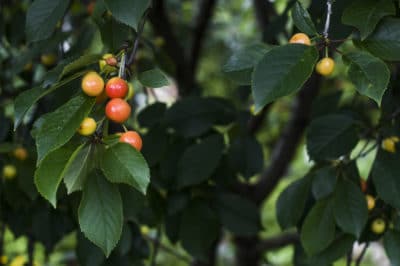Identifying a Wild Black Cherry by Location
Prunus serotine, also known as wild black cherry, black cherry, and rum cherry, grows from the Eastern U.S. to Southeastern Canada and all the way down to Texas and parts of the U.S. Southwest. It can also be found in parts of South America, Guatemala, and Mexico.
- This species was exported to Europe in the 17th century where it is now found growing in gardens and the wild. Wild cherry trees grow in USDA hardiness zones 3 through 9.
- Wild cherry trees are considered invasive because they grow quickly and take root in uncultivated fields and wasteland areas. Take note of the location where the tree is growing to help you in determining if it is a wild cherry or another species of tree.
What to Look for When Identifying a Wild Black Cherry Tree
Leaves
Wild black cherry trees are deciduous, losing their leaves in winter. In fall, the leaves turn yellow or light orange in color, and in spring the leaves are dark green.
Wild black cherry tree leaves are 2 to 5 inches (2 to 12.7cm) in length, and they grow alternately on the branches, meaning they are staggered one from another and not opposite one another where the leaf stem emerges from the twig. The edges of the leaves have small serrations that point toward the tip of the leaf, and the tip of the leaf is pointed.
The smell of wild black cherry trees leaves is distinctive and helpful in identification. If you crush a leaf and smell it, it has the odor of bitter almond due to hydrocyanic compounds it shares with almond and other fruit trees. However, this compound is poisonous, so wash your hands carefully after handling wild cherry leaves.
Bark of Wild Black Cherry Trees
During the dormant season when wild cherry trees lose their leaves, the bark pattern can be especially useful for identifying the tree.
The bark on this species of wild cherry is light grey and has a cork-like appearance. Similar to sweet cherry trees, the bark grows in horizontal layers which develop into patches which are sometimes described as looking like burnt cornflakes.
The Other Type of Wild Cherry Tree
Prunus avium is also known as sweet cherry, and it occurs in the wild as well as in cultivation. These trees can be found in the wild in many areas of the United States and Europe.
